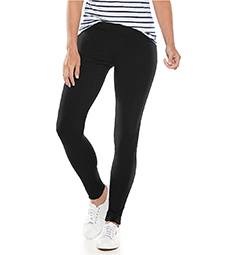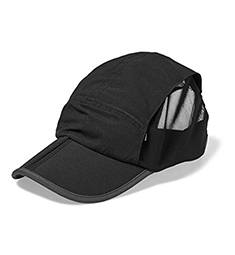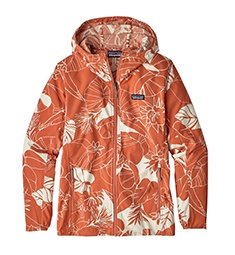Your clothes are the one place you aren’t using sunscreen but should
Here's everything you need to know about clothes made from ultraviolet protective fabric, including how UPF differs from SPF. Plus, we've rounded up the best UPF clothing essentials every person who plans to have fun in the sun should own.

Like a nutritious diet, sun protection is essential for healthy skin. And yet somehow, it’s something not everyone thinks about wholeheartedly.
Yes, sun safety has hit a trendier stride than in decades past (when tanning with baby oil was a thing) and people have tuned in to UVA and UVB rays in terms of their skincare routine, but taking an extra step with sun protective clothing may be just as important as wearing sunscreen daily.
What is UPF clothing?
For starters, the abbreviation stands for ultraviolet protection fabric. And it refers to any “clothing [that’s] specifically designed for sun protection and produced from a fabric rated for its level of UV ray protection,” says Mike Schulam, Eddie Bauer’s vice president of merchandising. “Like SPF in sunscreen, UPF indicates what fraction of the sun’s ultraviolet rays can penetrate the fabric.” So, UPF 50 or UPF 30 are examples of ratings you’d read on a label.
The similarities between UPF clothing and its skin-care counterpart don’t stop there: You should really be wearing both 365—not just during the 99 days of summer. According to Hayley Round, a senior merchandiser at Athleta, UPF products should be worn anytime you’re in the sun—summer or winter. “It’s especially great for those long days when you might be outside for hours and maybe not thinking about reapplying sunscreen all over,” she says.
Which brings up a good point: What *exactly* is the difference between UPF and SPF?
Sunscreen versus UPF clothing
To be clear: UPF clothing isn’t a substitute for sunscreen. Instead, think of it as the avocado to your SPF’s toast. Now I’m hungry, but there’s still more you need to know about *how* the two types of sun protection are same, same—but different—so here it is.
Makings sure you’re using a shot glass full of sunscreen is certainly beneficial for your skin, but clothing with UPF protection is longer lasting because its effectiveness doesn’t diminish over time.
“With UPF clothing, you can wear it all day and be protected,” says Schulman. This is especially great if you plan to be in water like at the beach, a pool, or lake adds Round. (Most SPF 50 sunscreens, the minimum level of protection derms recommend, are only water resistant up to 80 minutes.) Plus, “it’s great to ensure you don’t miss a spot on hard to reach places on your back,” says Round.
In other words, UPF clothing literally has your back. And now that the functional reasons it deserves a spot in your wardrobe are squared away, let’s focus on fashion.
The best UPF pieces to wear
It’s understandable that adding another layer of anything before going outside when the air feels more like soup than actual air is the last thing you might want to do. But UPF clothing makers are aware of this, which is why the fabric is lightweight and breathable. Phew!
A good starting point is a top, according to Round. She recommends looking for ones with added features like mesh ventilation and quick-drying fabrics to keep you cooler. Though, the fact that you care about sun protection already makes you pretty cool, IMO.
Schulam agrees and specifically recommends going with a long-sleeve, quick-dry shirt or jacket. Why? “The shoulders, back, chest, and arms typically receive the most sun exposure.” He also advocates for a hat with UPF. “Something lightweight that keeps the sun off your face is ideal.”
For your next under-the-sun activity, ahead are five pieces of UPF clothing and accessories to keep you extra protected.
UPF clothing FTW

Coolibar Women's Summer Leggings UPF 50+ $50

Eddie Bauer Resolution Packable UPF Cap $20

Patagonia Women's Bajadas Hoody $90

J.Crew Long-Sleeve Rash Guard $68

Athleta Sunlove UPF Dress $69
Sign up for the Well+Good SHOP Newsletter
Get exclusive deals on wellness, beauty, fitness, and food products that have been hand-picked by our editors.
Got it, you've been added to our email list.










